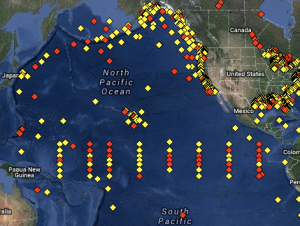Meteorologists and Scientists from around the world depend upon data sent from the TAO/TRITON array of buoys in the Pacific Ocean to predict weather patterns around the world. Once 80-90 percent operational, by the end of 2013 that information has dropped to around 40 percent.
This data has been used in the past to create weather models and provide early alerts likely saving both lives and money specifically with regard to El Nino events. Droughts, flooding and severe Winter weather can all be attributed to the El Nino and La Nina patterns.
But why the sudden collapse? In simple terms, U.S. funding cuts and the retirement of one of the U. S. ships key to maintaining the buoys caused the rapid collapse of the array. Concerned Scientists from around the World will be meeting in San Diego next week at Scripps Institution of Oceanography to discuss what’s needed to salvage, sustain and maintain the array of buoys and hope to announce new funding sources.
Funding will not likely come from the U.S. unfortunately demonstrating its priority regarding climate change and the environment and will more likely come from Asian countries such as China and South Korea, also affected by Pacific Ocean weather patterns.
Good Article from smh.com.au, Australia
You can see all the buoys with no data from the NOAA National Data Buoy Center

